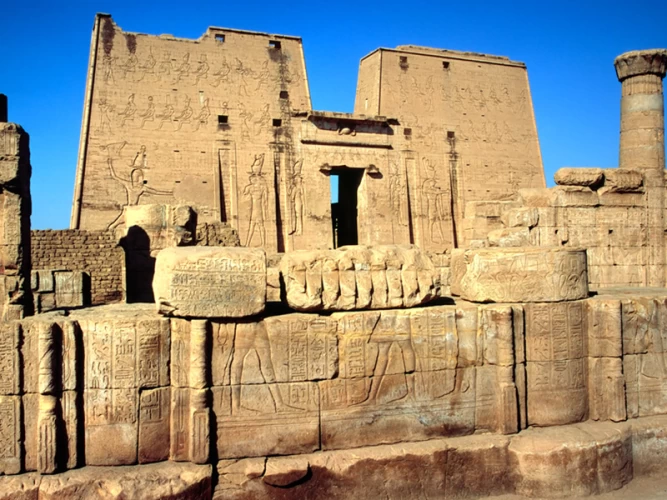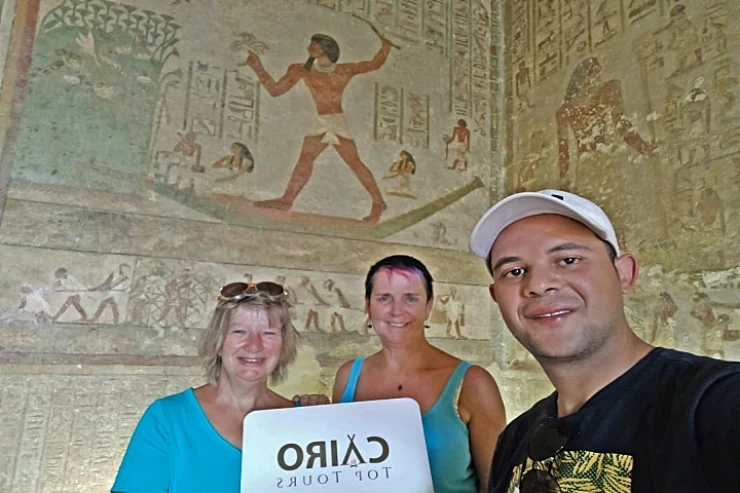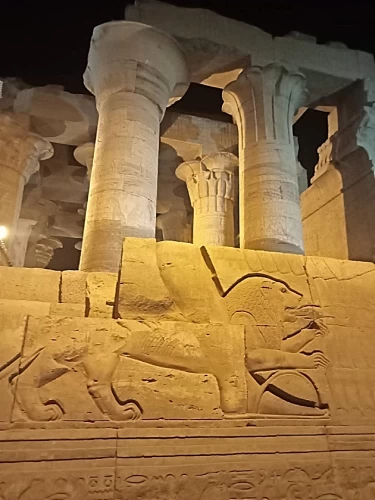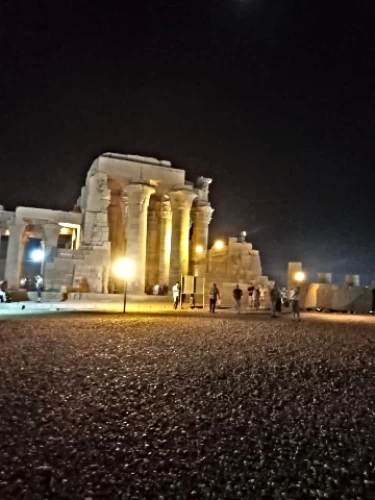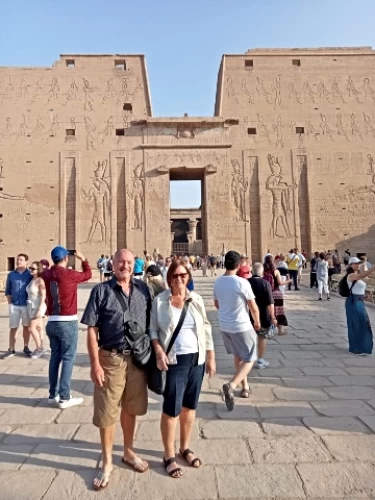Get ready for a unique experience, as in the morning one of our expert guides will be waiting for you to accompany you on this full-day excursion to Aswan from Luxor.
Our tour will allow you to see the Temple of Edfu, also known as the Temple of Horus, which is the second-largest temple in ancient Egypt after Karnak. It is situated in the city of Edfu, Upper Egypt, on the west bank of the Nile River. Known in Hellenistic times as Ἀπόλλωvoς πόλις in Greek slang, the temple is an example of the Ptolemies' attempts to construct a grandiose temple. It took roughly 180 years to build the Temple of Horus.
Additionally, this tour will allow you to learn that the temple is devoted to Horus, the primary deity, which in Greek is Apollo. It is one of Egypt's best-preserved sanctuaries. The temple was built during the Ptolemaic Kingdom, between 237 and 57 B.C. Important details about Hellenistic Egypt's language, religion, and mythology are engraved on its walls. The building texts that are engraved on the temple specifically "provide details [both] of its construction and preserve information about the mythological interpretation of the temple and other temples such as Khalk Island."
Our next journey took us to the magnificent Kom Ombo Tempel. This temple was constructed under Ptolemy VI Philometor, but it wasn't until the time of Emperor Tiberius in the Roman era that it was fully decorated. This temple shares many of the same features as other Ptolemaic Egyptian temples, including architecture, decoration, and design. However, it has a unique feature because of the local cult, where people worshipped two falcon-headed local gods, Horus and Sobek. Despite their differences in origin and nature, these two gods coexisted for centuries without blending or combining.
However, despite their different origins and personalities, these two gods coexisted peacefully for centuries without mingling or merging. As a result, this temple is divided into two sections, each of which is devoted to the worship of one of these two gods. Additionally, on the axis of each of these two shrines are doors that are adjacent to each other, both in the outer wall and in the walls of the colonnaded halls and beyond.
At last, we will return to Aswan with some of the most unforgettable memories and learn a lot about the history of Egypt.



